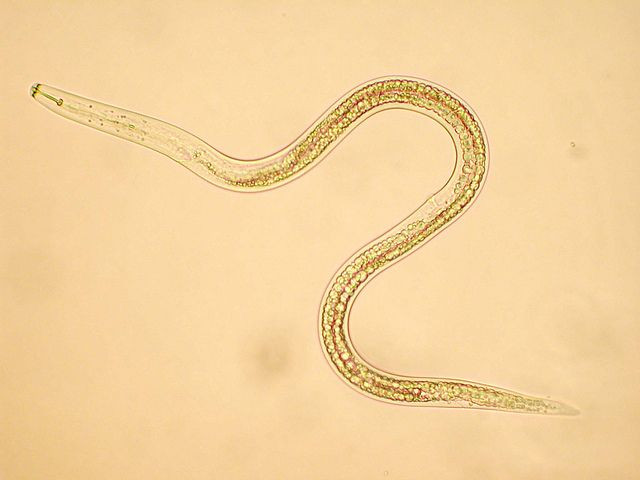Worms That Can’t Get Drunk May Offer Means To Sobriety, Break From Alcohol Addiction

Worms have given us a lot over the years. They fell on their sword just so we could learn how death happens, and they showed that living to the ripe age of 500 isn’t impossible. (Not that they have much choice in these matters, but we appreciate their contributions all the same.) Now, new research shows breaking alcohol addiction could be a flip of a switch away.
Unlike other drugs, for which science has discovered crucial pathways that can be blocked to suppress cravings, such as naloxone for heroin overdoses, alcohol has eluded much of the clinical research. Scientists have yet to find a spot in the brain where chemical treatment could stop you from getting drunk, or that would put an end to your addiction altogether. A new study from the University of Texas at Austin suggests a group of nematodes, known as Caenorhabditis elegans, may offer enormous clues about where to find that switch.
Governing many of your body’s normal functions is a potassium channel known as the BK channel. It evolved billions of years ago as a means to regulate electrical signals and control the release of certain hormones, such as insulin from beta-cells in the pancreas. Study author and associate professor at UT Austin, Dr. Jonathan Pierce-Shimomura, says knowledge of the channel predates science having a use for it.
“Oftentimes you can come up with a medicine to perturb the target, but you also perturb its normal function,” Pierce-Shimomura told Medical Daily. You may very well “turn off” people’s drunkenness by blocking the BK channel, but you’d also give them a seizure and possibly kill them. The trick is in pinpointing the only part of the channel that affects intoxication.
Pierce-Shimomura and his colleagues believe they’ve found that part, if only in worms. They mutated certain amino acids in the worms, using a kind of brute force method, and observed how the worms responded. Eventually, they whittled the targeted mutations down to a single mutation that effectively made worms stop getting drunk, reflected in their decreased wriggling and crawling. Intoxicated worms also stopped laying eggs, which the researchers could easily observe by counting.
The study provides a proof of principle that BK channels offer the potential for sobriety, the team argues. It doesn’t prove that people will respond the same way to manipulation of the BK channels, so experiments on mice and eventually humans are in the pipeline, Pierce-Shimomura says. He and his colleagues know alcohol’s physical effects can be suppressed; now they need to investigate its neurological effects, such as craving and hallucination. These tests require more complex animals.
The upshot to all this research — fiddling with worms is all fun and games, but what’s in it for me? — is a twofold system of sobriety, one in the short-term and one in the long-term. In the short-term, a consumable pill or drink that targets the BK channel could keep people safe when they’ve had one too many. Their brains would no longer feel the effects of alcohol in their bloodstream. On a longer timeline, people with alcohol addictions could block their brains’ craving for the drug.
A third option may also exist, Pierce-Shimomura explains. People for whom heavy alcohol consumption is more or less effortless could benefit from learning the specific neural effects of the drug on their BK channels. “If people knew that ahead of time, that might mean they could be predisposed to addiction because those people might not feel the deterring effects of intoxication,” he said. This behavior would continue until it reaches a consumption level, both in quantity and duration, “that permanently alters their brain to push it into an addictive state.”
Source: Davis S, Scott L, Hu K, Pierce-Shimomura J. Conserved Single Residue in the BK Potassium Channel Required for Activation by Alcohol and Intoxication in C. elegans. The Journal of Neuroscience. 2014.



























